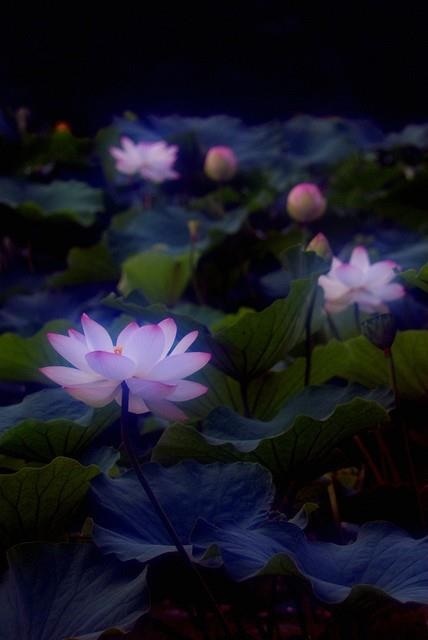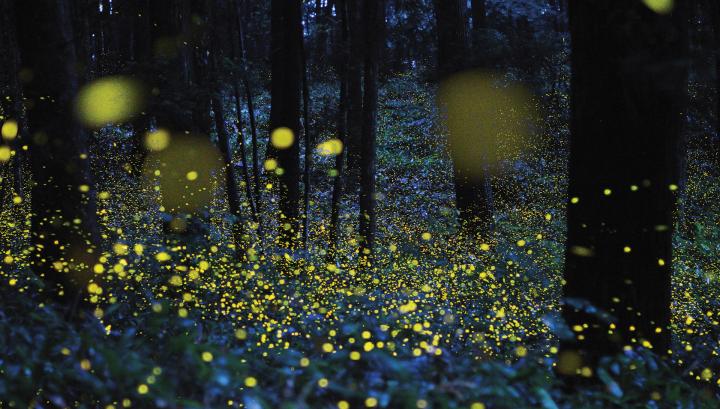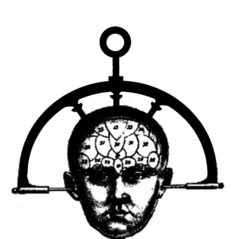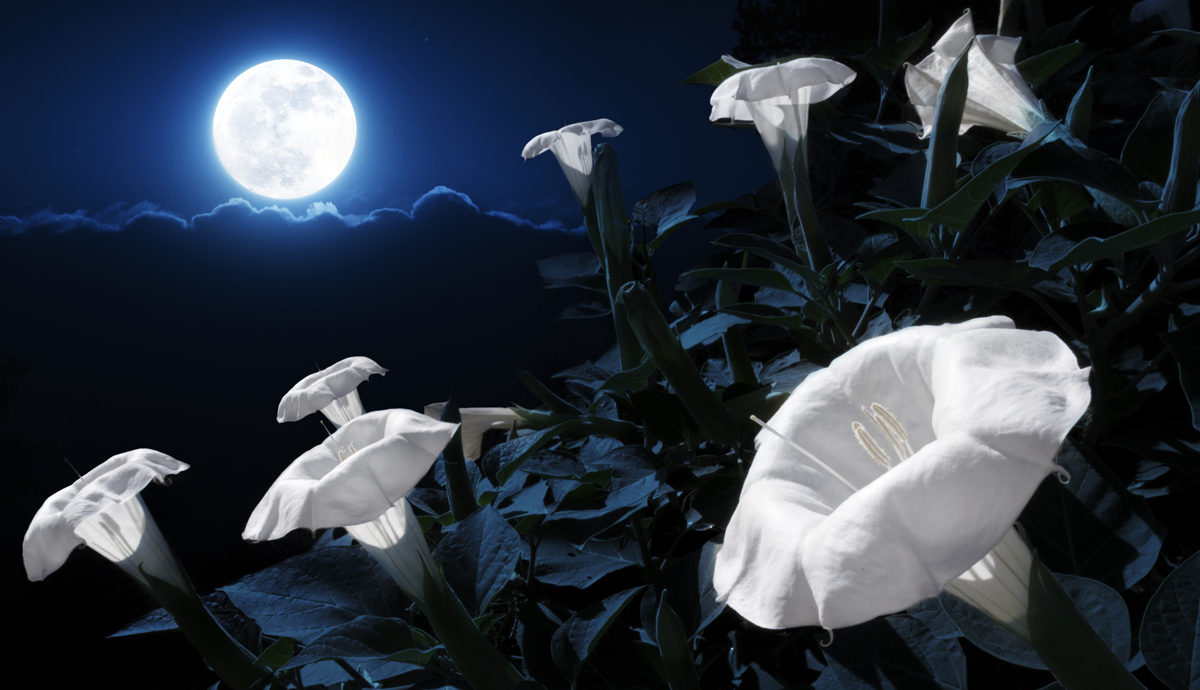As bats arc low along the treeline, as moonlight entangles itself in high branches, sparkling on water, I feel myself drawn out into the still night world, into the Moon Garden. Pale blooms of silver and white seem to glow, cupping the moon, catching and reflecting its light. Textures and dusky silhouettes rustle against one another. Fragrant night blossoms spill scent into the darkness, drawing moths and bats out to play as cicadas chirr softly in the distance.

If the night speaks to you, consider creating a Moon Garden for yourself. They can be mysterious and magical, filled with pale blooms, deep shadows, and fragrant blossoms that appeal to night pollinators like bats and moths. As your eyes adjust to the darkness, pale colors take on a new glow. Pure white blooms appear to float above their deep green stems, fading into the shadows. Lighter shades of lavender, chartreuse, or soft pink mingle quietly with foliage in shades of silver and grey, adding a light contrast to a Moon Garden as twilight deepens into full dark. Masses of low-growing bloomers blanket the ground beneath taller plants like snapdragon, foxglove, phlox, or rose of Sharon as a pale clematis vine knots itself about a beautiful arbor. Pale-barked trees like birch help anchor the garden and offer a beautiful silhouette, drenched in moonlight.

Flowering tobacco, angel’s trumpet, night jasmine, night phlox, and four o’clocks are just a few of the fragrant flowers that release their scent in the evening or at night and may entice moths and bats to visit. New Guinea impatiens, evening primrose, petunias, dahlias, clematis, white wisteria, white Japanese lilac, and bellflowers will all find a home in the moonlight garden. And no Moon Garden would be complete without the iconic moonflower, of course. Choose your favorites, suited to your climate and soil, and plant them in masses, varying the heights, shapes, and textures. If scattered broadly, small pale flowers tend to be lost in the darkness; instead, repeat a favorite flower in multitudes and watch it fill the spaces in your garden with grace and power.
Hardscaping

Hardscaping elements such as pathways, fencing, and arbors offer anchoring elements to the nocturnal garden. You could build a cairn of pale stones as a centerpiece or place a worn bench beneath a flowering tree to invite a quiet moment. Similarly, plants with unique architectural forms, such as Harry Lauder’s walking stick, create interesting shadows at night and all such elements are striking when iced with snow or frost in the dead of winter.
Reflections

Reflective surfaces capture glimmering moonlight and cast it like a magic lantern. Glass objects, scrying mirrors, gazing balls, small ponds and bird baths all offer ways to scatter and reflect soft light. Add tiny garden lights or solar lighting for new moon nights. If you are lucky enough to have a pond, a well-placed light source will shimmer like a tiny moon in the dark waters. There are even varieties of night-blooming water lilies such as Red Flare and Charles Tricker.
Sound and Silence:

In the darkness, sound takes on a new dimension. The soft rustle of tall grasses, bamboos, and leaves; the soft tone of a well-placed wind chime or water chime; the burble of water in a fountain; the soft hum of insects, waking for the evening.
A List of Pale Flowers and Plants:

The selection of pale flowers may be broken down by season. This list focuses on the Northeastern US, where I happen to live. You will need to consider the blooming season of any flowers you choose for your own area.
Early to Mid-Spring Bloomers
Snowdrop
White daffodil
White tulip
Bleeding heart
Fothergilla
Azalea & rhododendron
Star magnolia
Chanticleer & Bradford pear tree
Pearlbush
Helleborus
Mid-Season Bloomers
Yarrow
Queen Anne’s lace
Sweet alyssum
Snow in summer
Candytuft
Shasta daisy
Foxglove
Laurel
Climbing hydrangea
Hydrangea
Japanese dogwood
Doublefile viburnum
Dwarf Deutzia
Delphinium
Mock orange
Late Bloomers
Mums
False dragonhead
Phlox
Sweet autumn clematis
Astilbe
Heather
Hollyhock
Coral bells
Foliage
Pale foliage can be absolutely luminous on a moonlit night. Foliage also requires less maintenance and will last longer than blooms which come and go throughout the season.
Those perfect for a Moon Garden include:
Variegated dogwood
Silver lamb’s ear
Dusty miller
Silver artemisia
Hosta
Fragrance

Adding fragrance to the Moon Garden, you may want to use more typical fragrant blossoms coupled with the enticing secret of those which release their scent only at night:
Fragrant Night Bloomers
Evening primrose
Angel’s trumpet
Moonflower
Plants with Fragrant Blossoms
Peony
Bearded iris
Korean spice viburnum
Rose
Lilac
Lily
Featured image via totallandscapecare.com (Moonflower)

